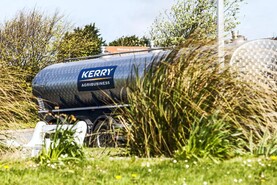The 2016 Department of Agriculture National Sheep and Goat Census shows the ewe flock rising by a modest 6,030 head to 2.65m ewes. This follows an increase of 137,037 in 2016 and 82,637 ewes in 2015 and keeps the flock on an upward trajectory, with total ewe numbers rising 455,000 head since 2009.
Growth has slowed significantly in recent years and is likely to be stemmed in 2018 by a combination of a difficult spring and higher mortality and drought conditions denting confidence. The largest increase in percentage terms occurred in Leitrim, where the flock grew by 2.5%, while Sligo saw an increase of 2.2%, followed by Cavan at 2.0%.
While the largest percentage increases occurred in more marginal land, the areas that saw the greatest decrease in ewe numbers were predominantly in the east and southeast. Offaly saw a decline of 5%, followed by Laois with a 4.2% decline. Limerick and Kildare saw decreases of 3.6% and 3.3% respectively.
Marginal land sees greater increase
It is not surprising that in number terms, the largest increase came in counties with the most ewes. These are mostly counties with a greater proportion of marginal land. Kerry saw its flock increase by 3,576 ewes to 245,290 while Mayo saw the second largest increase of 3,392 ewes, bringing the flock to 307,554. Donegal and Galway also saw increases of 2,994 ewes and 2,702 ewes respectively.
In contrast, Kildare saw the largest decrease in ewe numbers, with 2,582 fewer recorded in December 2017 compared with 2016. The other large decreases came about in Offaly and Tipperary, with falls of 2,468 and 2,257 respectively.
The total number of sheep fell 43,127 stemming from a lower carryover of hoggets and this was reflected in tighter supplies this spring.
Flock numbers falling
While 2016 saw an increase in the number of flocks in the country, having risen by 1,059 on the previous year, there was a different trend in 2017, with the number of flocks recorded down by 536 to 35,777. However, the number of flocks is still about 500 higher than 2015. One possible reason for the decrease could be the slight reduction in store lamb purchasers in the market in autumn 2017 than 2016 on account of poor weather conditions. According to Department of Agriculture figures, the only county which saw an increase in the number of flocks in 2017 was Sligo, which saw the number of registered flock owners increase by 17. All other counties saw a reduction in the number of flocks. The largest decreases in the number of flocks were Galway and Roscommon which saw numbers decrease by 69 and 64 respectively.
Flock sizes larger in the east
Despite counties on the western seaboard recording the largest numbers of ewes, the largest flocks are predominantly on the eastern side of the country. Wicklow has again the largest average flock size at 187 ewes, followed by Kildare at 173.
The average flock size in Kildare grew by nine ewes per flock, while in Wicklow the increase was just four ewes per flock.
While Donegal has the most ewes, the average flock size is just 82 ewes, while in Mayo the average flock size is 88 ewes, showing that the holdings are much smaller. Another interesting point is that the average flock size in Laois decreased by 10 ewes per flock, the largest decrease in the country. However, the average ewe flock in Laois is 111 ewes.
Mountain ewes up 26,679
The census figures show that 794,440 ewes are mountain ewes (30%) while a further 457,150 are mountain cross ewes (17%), accounting for 47% of total flock numbers between them. There were 557,296 lowland ewes (21%) recorded in the census while a further 837,172 ewes (32%) were recorded as lowland crosses. When compared to last year’s data, we can see that mountain ewe breeds increased by 25,500 ewes, while mountain crosses increased by 1,100 ewes.
The number of lowland ewes recorded decreased by 20,000 ewes while lowland cross ewe number increased by 414 head.
The change in ewe breed type reflects movement in the national flock, with an increase hill ewes recorded along the western seaboard.






 This is a subscriber-only article
This is a subscriber-only article









SHARING OPTIONS: